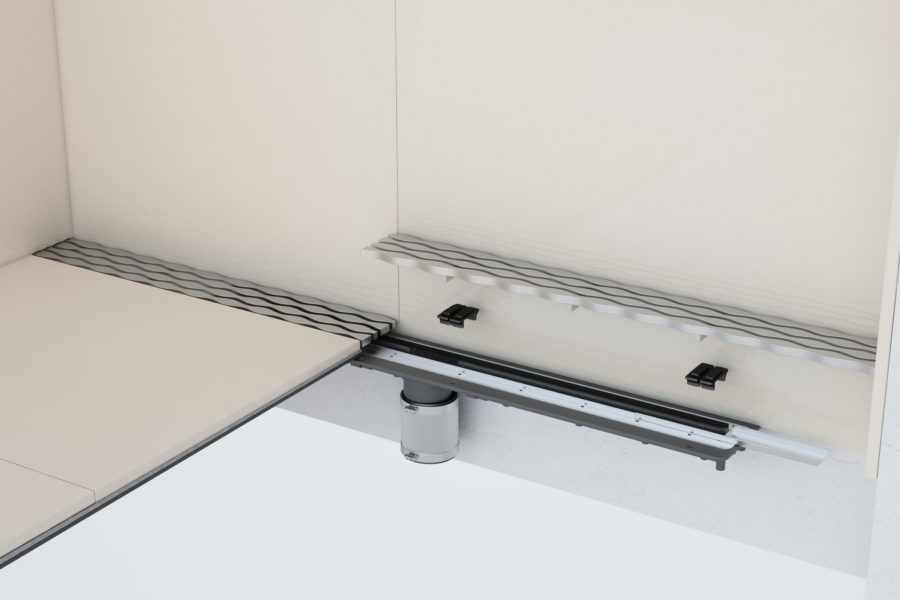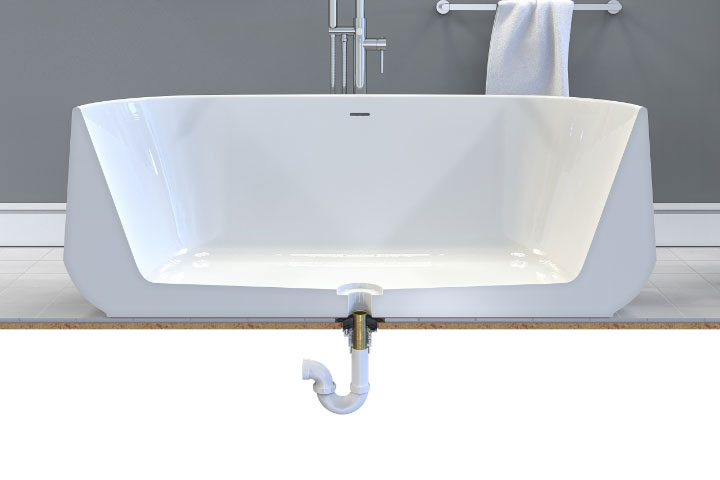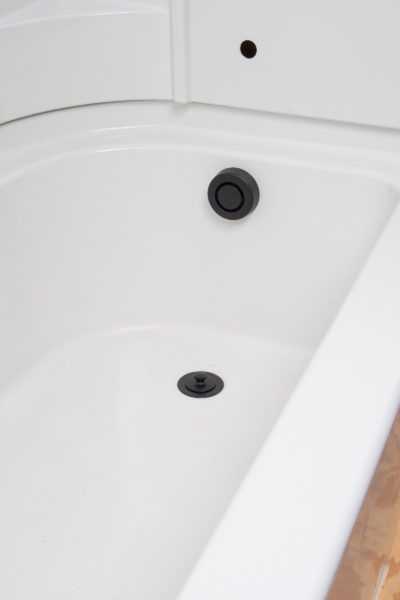Story at a glance:
- In the world of plumbing, design visions are not always easy to execute due to the potential of running into unexpected rough-in issues.
- Often, the designer, contractor, plumber, and client may have different expectations.
- Three flexible plumbing solutions could bridge the gap between what the designer wants and what the plumber is able to accomplish.
It’s no secret that the contractor-designer relationship is often filled with tension and challenges. That’s because the roles of contractors and interior designers on construction projects often intersect in crucial ways.
Not only must contractors execute the designer’s vision, but they also face some difficult jobsite challenges that are not considered in the initial design vision.
Specifically, when it comes to plumbing, the design vision is not always easy to execute due to the potential of running into some unexpected rough-in issues. More often than not, when plumbing contractors start demoing, they run into different plumbing and fixture layout conditions. They also rarely have a space that is exactly set up as it says on the construction plans.
The best solution is for these parties to find a way to work together in the interests of the client so the project runs as efficiently as possible. Designers and contractors should manage expectations, communicate effectively, trust each other’s expertise, and make compromises.
Instead of jumping to redoing design plans when problems arise, they should come together to discuss product solutions that might be able to preserve as much of the work already done as possible. This is often where contractor expertise could come into play, as they may be able to provide a product solution the designer is not thinking about.
Below we share three flexible plumbing solutions that could bridge the gap between what the designer wants and what the plumber is able to accomplish given certain jobsite challenges.
1. Customizable Shower Solutions

Photo courtesy of Oatey
A common construction scenario: A designer or building owner wants to remove old tubs in a multi-story building, replacing them with modern step-in showers. However, once the plumbing crew demos out the tubs, they encounter numerous job-site irregularities. The specified shower pans will no longer fit the space because the existing drain is off-center, and the enclosure is not 30 by 60 inches as it says on the construction plans.
Surprised by the costs associated with customizing pre-formed shower pans, the designer and contractor are now at a crossroads. Do they completely change direction or come together to find a new product solution? Could this complication be avoided by initially specifying an onsite customizable solution?
One option would’ve been to use a tile-ready and site-sizable pan to contend with a full range of rough-in configurations. An onsite customizable solution like QuickDrain’s pre-sloped shower panels can be easily cut and pieced together on the jobsite without costly customization.
QuickDrain linear drain bodies accommodate challenging changes in height (via stackable leveling spacers) and in width (via drain trough extensions). The drain-trough extensions enable installers to move the drain body side-to-side to avoid any site obstructions, while still providing wall-to-wall coverage recommended for efficient drainage.
2. Universal Freestanding Tub Drains

When installed at rough-in, the 1916 Collection Universal Freestanding Tub Drain provides simple installation between the P-trap and tub—without needing access from below the floor. Image courtesy of Oatey
The demand for freestanding tubs has increased in recent years, with this version of the bathtub becoming one of the most desired fixtures for all types of bath decors. However, ask any plumber how they feel about installing a freestanding tub, and they will likely share multiple job-site frustrations involving the installation of the drain.
Picture this: The designer or building owner envisions the newest freestanding tub in an updated bathroom. However, to install the freestanding tub, the plumber needs to access the drain through the ceiling of the floor below.
The designer is now faced with unexpected labor costs and is, once again, at a crossroads. Do they sacrifice other design elements to make the freestanding tub happen? Or do they work with the contractor to find another product solution?
One option would be a universal freestanding tub drain, which offers the most convenient way to install freestanding tubs. It removes guesswork and complexity while making this growing trend more accessible to building and homeowners.
Specifically, this innovation offers an easier and faster way to install freestanding, island center, and offset tubs by eliminating the stub-out method. It also avoids the need to access the drain through the ceiling of the floor below, which is terribly disruptive for both residential and commercial spaces. Its compact size allows the drain to fit inside 8-, 10-, and 12-inch joists, and it can also fit inside a 4-inch hole saw opening, which makes it a great choice for remodels.
From a design perspective, a universal freestanding tub drain allows flexibility in terms of tub location. That’s because its compact size allows it to more easily fit between floor joists.
It is also less costly to install since you don’t need access from the ceiling below. This advantage, in turn, allows installers to invest more dollars in other design elements.
3. Flexible Bath Waste and Overflow Trim Kits

Photo courtesy of Oatey
Chrome, brushed nickel, matte black, and oil-rubbed bronze are only some of the most popular fixture finishes in today’s bathroom. From modern designs to shabby chic trends, designers like to add finishing touches to a bath space like bath waste and overflow trims that complement the overall design theme.
Picture this: To match the envisioned industrial theme of the bathroom, the designer asks the contractor to install matte black bath waste and overflow trim. Unexpectedly, the owner wants to change the design direction and asks to change the finish.
This could mean the contractor has to find an entirely different bath waste and overflow kit or it would require additional work, which would increase labor costs. Once again the designer is at a crossroads. Do they compromise and stick with the initially chosen finish? Or is there a way to avoid this type of restriction?
One option that the contractor could utilize would be Dearborn True Blue Bath Waste trims, which come in chrome, brushed nickel, oil-rubbed bronze, matte black, and white finishes. This bath waste kit allows you to change the trim, i.e. the finish, without removing the spud.
The True Blue overflow cover locks with a simple clockwise turn, requiring no additional tools or screws for installation. If the designer changes their mind about which finish to use, it allows the contractor to quickly change the trim without removing the spud and it requires no additional sealants.
You’re never going to fully eliminate plumbing issues on a job. But by identifying flexible plumbing solutions, you can help minimize the issues.
Collaboration and cooperation between designer and contractor regarding product specifications is the key to overcoming bathroom plumbing challenges and meeting design needs.


